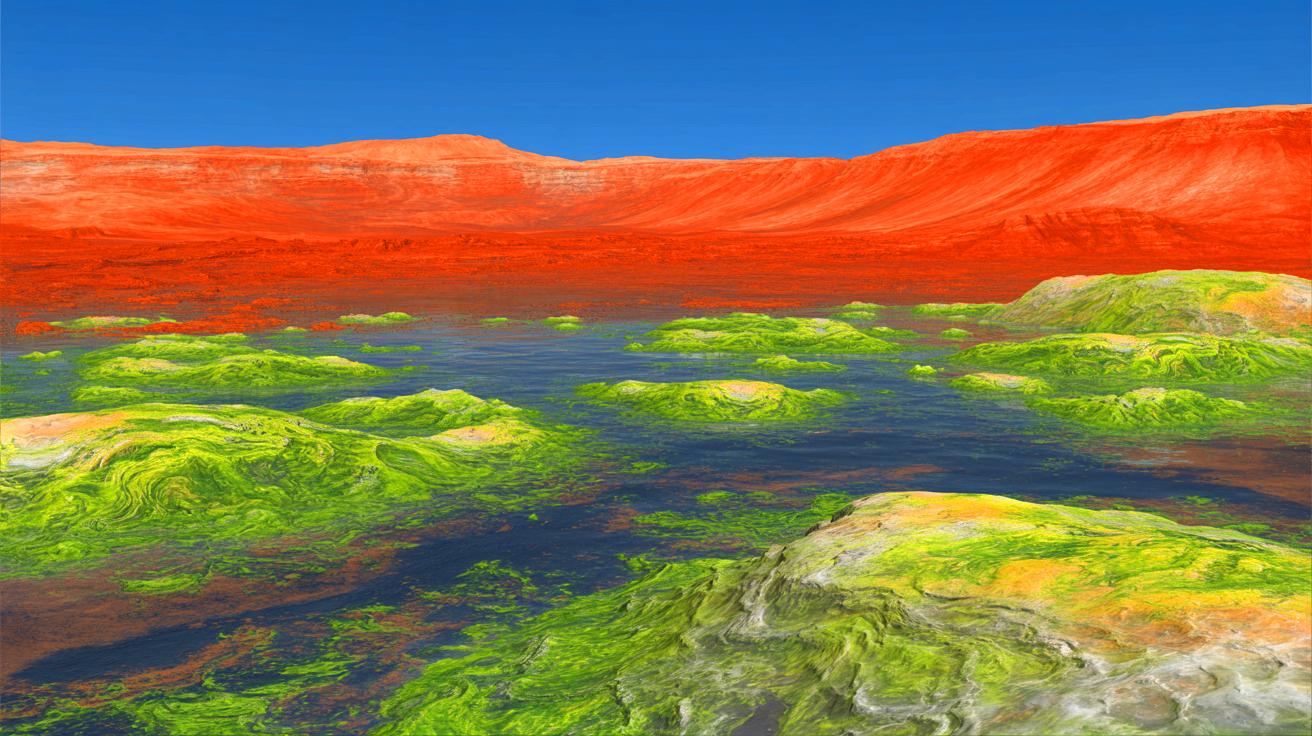- 🚀 Terraforming Mars has moved from science fiction to scientific possibility, with significant advancements in planetary science and biotechnology.
- 🔬 Researchers propose increasing Mars’s temperature and thickening its atmosphere to support liquid water and oxygen using engineered microbes.
- 💡 The study highlights the need for continued research, focusing on Mars’s water reserves and soil chemistry, to understand the planet’s transformation potential.
- 🌍 Innovations from Mars research, such as drought-resistant crops and soil remediation techniques, could also address environmental challenges on Earth.
As humanity’s gaze stretches beyond Earth, the once fantastical dream of terraforming Mars edges closer to reality. Recent scientific advances suggest that transforming the Red Planet into a hospitable world is no longer mere speculation. However, the path to achieving such a monumental feat is fraught with challenges, from technological hurdles to ethical dilemmas. Scientists are now re-examining the feasibility of turning Mars into a second Earth, weighing the potential benefits against the colossal costs and risks involved. This exploration not only promises to redefine our understanding of planetary science but also holds the potential to revolutionize life on Earth.
Rethinking the Possibility of Making Mars Habitable
The concept of terraforming Mars has long captivated the imaginations of both scientists and science fiction enthusiasts. While the idea has been around for decades, it wasn’t until recently that a comprehensive re-evaluation of its feasibility was conducted. According to Nina Lanza, a planetary scientist at Los Alamos National Laboratory, significant advancements in planetary science, geoengineering, and biotechnology over the past thirty years have opened new doors. To create an Earth-like environment on Mars, researchers propose increasing the planet’s temperature and thickening its atmosphere. This could be achieved by deploying engineered microbes capable of photosynthesis, gradually generating oxygen and paving the way for more complex life forms. Such efforts would fundamentally alter our approach to the cosmos, setting the stage for future interplanetary settlements.
Mars Terraforming Secrets Exposed
While the possibility of terraforming Mars is tantalizing, researchers caution against rushing into such endeavors without comprehensive planning. The challenges are significant: understanding Mars’s water reserves, carbon dioxide levels, and soil chemistry is crucial to determine the planet’s potential for transformation. New geoengineering techniques might raise Mars’s average temperature by several dozen degrees within decades, yet the physical, chemical, and biological limits remain largely unknown. The study underscores the necessity for ongoing research to delineate these constraints, ultimately guiding whether Mars should be terraformed or preserved as a pristine wilderness. This decision carries profound implications, not only for Mars but for future planetary exploration efforts.
Benefits Beyond the Red Planet
The quest to transform Mars promises to yield dividends that extend far beyond the Red Planet itself. According to the study, innovations developed for Mars—such as drought-resistant crops, soil remediation techniques, and advanced ecosystem modeling—could address pressing environmental issues on Earth. The research serves as a vital testbed for planetary science, potentially validating theories or revealing knowledge gaps. Whether or not full-scale terraforming ever materializes, the knowledge gained from these efforts can drive significant progress in scientific understanding, offering new tools and strategies to combat climate change and environmental degradation on our home planet.
The Path Forward to Transforming New Worlds
Despite the excitement surrounding the potential to transform Mars, scientists acknowledge that many questions remain unanswered. The study suggests that mastering the art of terraforming could be a crucial first step toward exploring and potentially settling other destinations beyond our solar system. This renewed focus on the Martian world heralds a new chapter in planetary science and space exploration. As humanity stands on the brink of interplanetary colonization, the lessons learned from Mars will undoubtedly shape our approach to future extraterrestrial endeavors. The prospect of transforming new worlds invites us to consider the ethical and practical implications of altering foreign planets, challenging us to rethink our role in the universe.
The dream of transforming Mars into a habitable world challenges us to push the boundaries of science and technology. As we continue to explore this audacious goal, the knowledge and innovations we acquire will not only redefine our understanding of the cosmos but also offer solutions to pressing problems here on Earth. With each step forward, we are reminded of our capacity for ingenuity and our insatiable curiosity about the universe. As we ponder the possibilities, we must ask ourselves: What will the next frontier hold, and are we truly prepared to embrace the challenges and opportunities it presents?
This article is based on verified sources and supported by editorial technologies.
Did you like it? 4.5/5 (23)
